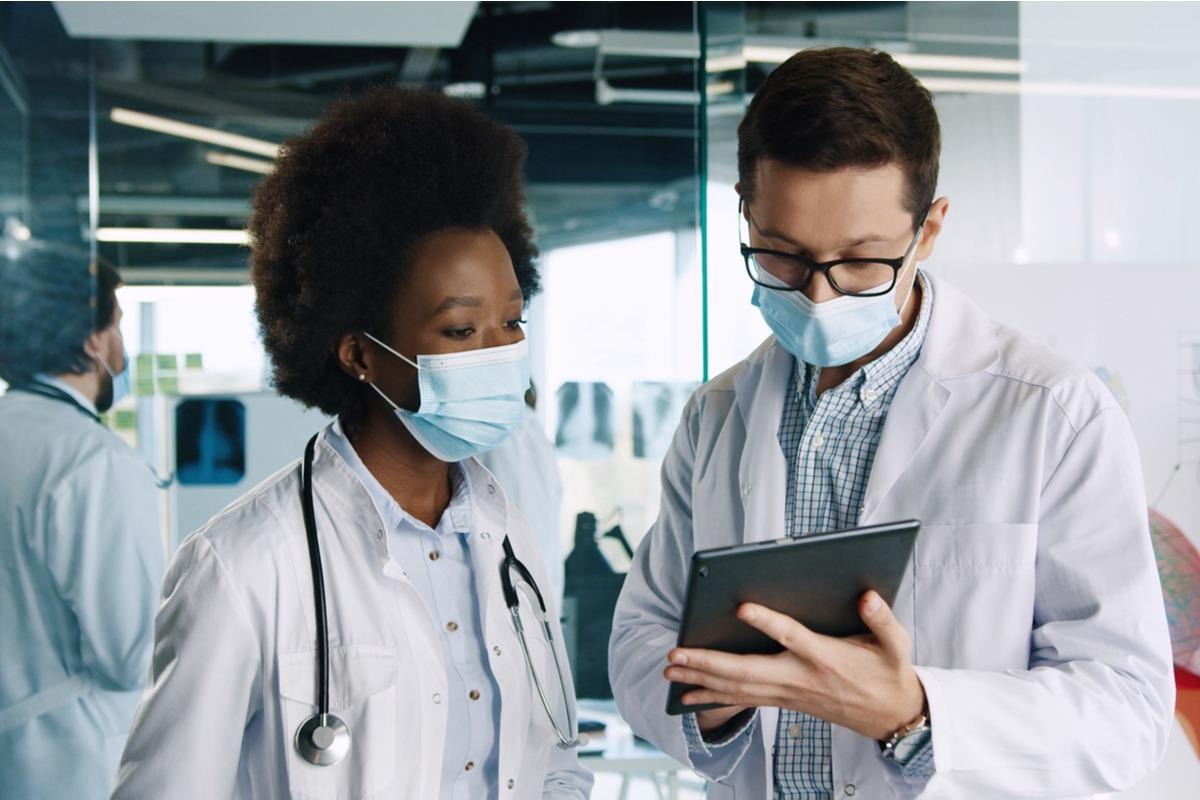In an article published in the Annals of Internal Medicine, researchers discuss the implications of the current monkeypox outbreak during the coronavirus disease 2019 (COVID-19) pandemic for healthcare personnel.
 Study: Adding New Fuel to the Fire: Monkeypox in the Time of COVID-19—Implications for Health Care Personnel. Image Credit: M_Agency/Shutterstock
Study: Adding New Fuel to the Fire: Monkeypox in the Time of COVID-19—Implications for Health Care Personnel. Image Credit: M_Agency/Shutterstock
Background
Several cases of monkeypox were recently reported in different places the world over. As this unusual infection crosses a thousand cases in six different continents, health care researchers warn that the world must be prepared to face a potential outbreak caused by this virus, in addition to the already circulating severe acute respiratory syndrome coronavirus 2 (SARS-CoV-2).
What is Monkeypox?
The monkeypox virus is one with a double-stranded deoxyribonucleic acid (DNA) genome and is one of the orthopoxviruses. Other well-known members include the smallpox, cowpox, and vaccinia viruses. However, the monkeypox is prevalent in Western and Central Africa, occasionally spreading briefly to the USA and Europe.
Monkeypox spreads from symptomatic cases via infected body fluids from when they come into contact with broken skin, through surface contamination, or skin-to-skin contact. Respiratory droplets from another avenue of spread. Both animals and human hosts have been implicated in earlier outbreaks in the USA, making this yet another of the zoonotic viruses.
The causative agent is the less pathogenic of the two circulating strains, with the mortality pegged at 1% or less during earlier epidemics.
Common symptoms during this outbreak include painful swelling of inguinal lymph nodes, or lesions in the groin, genitalia, around the rectum and anus. However, the presence of fever has often been lacking or very mild, causing clinical confusion. Typical earlier presentations have included fever, headache, muscle pain, back pain, vesicular skin lesions, and swollen lymph nodes.
However, the current outbreak of monkeypox in this country, coming on top of the COVID-19 pandemic, has mainly occurred within the community of young men who have sex with men (MSM). This may be due to their seeking help for a suspected sexually transmitted infection (STI)-like illness at sexual health clinics.
Spread within care settings
To limit the size of the outbreak, professional guidelines include caring for suspected cases in a healthcare setting while wearing personal protective equipment (PPE) to prevent airborne transmission and notification of health departments at local and state levels. Since the virus can remain infectious for years in shed skin or crusted scabs, special attention must be paid to disinfecting frequently contacted surfaces and to preventing the production of infectious aerosols during routine cleaning procedures.
Hospital linens could easily harbor the viruses, even after routine washing, because these particles remain infectious after desiccation and heat. Thus, workers who perform such tasks as shaking out sheets used by such patients are more likely to be exposed to the virus than those who merely supply medications and take the vital signs of the patient.
Moreover, patients with the infection must be traced for prior visits to hospitals or other facilities and contact with other staff before the diagnosis is suspected and anti-contagion measures are put in place. All such staff personnel require individual exposure risk evaluation as well as advice on isolating, self-monitoring, and symptom reporting.
At present, those who have been exposed are not required to quarantine themselves but may look for symptoms daily, as well as check their body temperature twice a day. Only those who are symptom-free should report for work. This may help limit missed diagnoses and prevent further inadvertent spread.
Again, patients with the monkeypox may visit clinics that handle STIs or other outpatient healthcare facilities due to the atypical presentation. This may lead to the further spread of the virus. A high level of alertness is recommended in such settings to trigger the use of PPE when necessary.
Limiting infection spread
“Now we are facing infections on every inhabited continent at a time when clinical and public health resources have been stretched to the limit by COVID-19.” With the prospect of public and healthcare workers alike reluctant to face further risk mitigation measures, this new threat to public health must be tackled with tact rather than coercion.
The fact that the MSM community is most affected should lead the public health responses to center around the infection control and treatment needs of this group, without ostracizing them.
Finally, a powerful chain of communication between public health departments and infection control organizations such as the Centers for Disease Control and Prevention (CDC) has been built up during the ongoing COVID-19 pandemic. This should be leveraged to put in place an efficient infection control response while gathering the necessary resources. A united effort by all agencies involved in this field will probably provide the best chance of arresting this outbreak before it becomes a full-fledged epidemic.